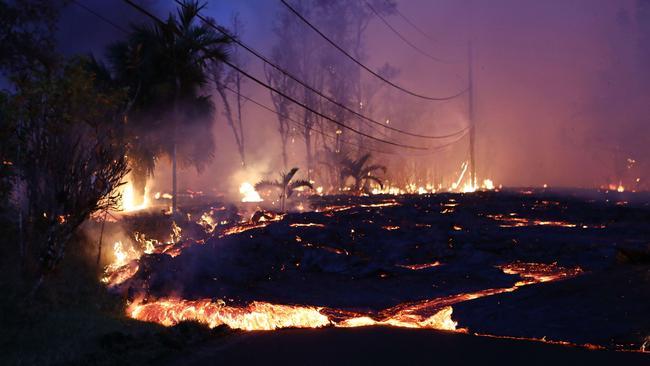Air cushion the key to lava hitting 650km/h
One survivor described the flow from a volcanic eruption as like a terrible wind that trembled the earth, burning all in its path.

One survivor described the flow from a volcanic eruption as like a terrible wind that trembled the earth, burning all in its path.
He was lucky. For the most famous victims of a pyroclastic flow, in Pompeii in AD 79, only their bodies remain to attest to the speed and ferocity of the eruption, today existing as ghostly plaster casts caught at the moment of death. If you find yourself in the path of such debris, which can travel at up to 650km/h and spread for 80km, you tend not to live to tell the tale.
Now researchers have come up with the best explanation yet for the mechanics of these volcanic flows, which occur when the initial plume collapses into a torrent of hot gas and ash. They did this by recreating one, showing that the flows produce their own cushion of air that helps them to move like a fiery hovercraft.
Understanding these flows is crucial because most deaths from volcanoes stem from the fact that they move further and faster than seems possible.
In 1902, 30,000 people died when Mount Pelee erupted on the island of Martinique.
One of the handful of survivors said that those around him were burnt to death by a fiery wind that arrived without warning. The team from Massey University in New Zealand recreated it, using more than a tonne of volcanic material and repeatedly dropping it down a slope.
It is thought that the secret to pyroclastic flows is the way they trap air beneath them, allowing them to travel almost without friction. Because they are hard to study, it has never been clear how they maintain this air cushion.
The researchers, writing in the journal Nature Geoscience, found that as the volcanic material moved down the slope it sheared, with the top layers travelling faster than the lower ones.
Normally the highest pressure would be at the bottom but these shear forces produced an area of higher pressure in the centre of the flow. This in turn forced gas up and down and so replenished the air cushion beneath. The result is a phenomenon that is terrifying today but that for those near Vesuvius in AD 79 must have seemed like the end of the world.
The Times


